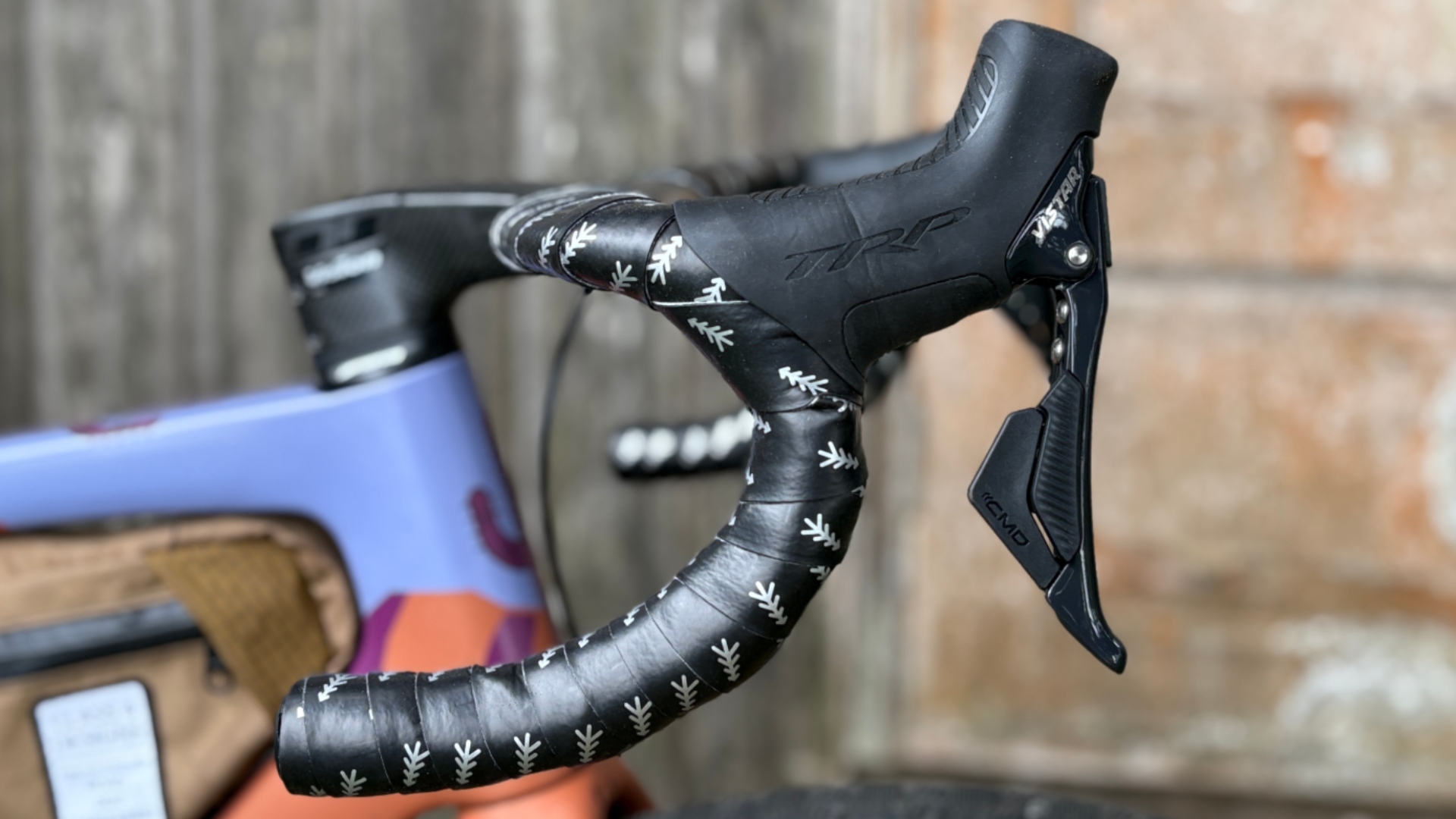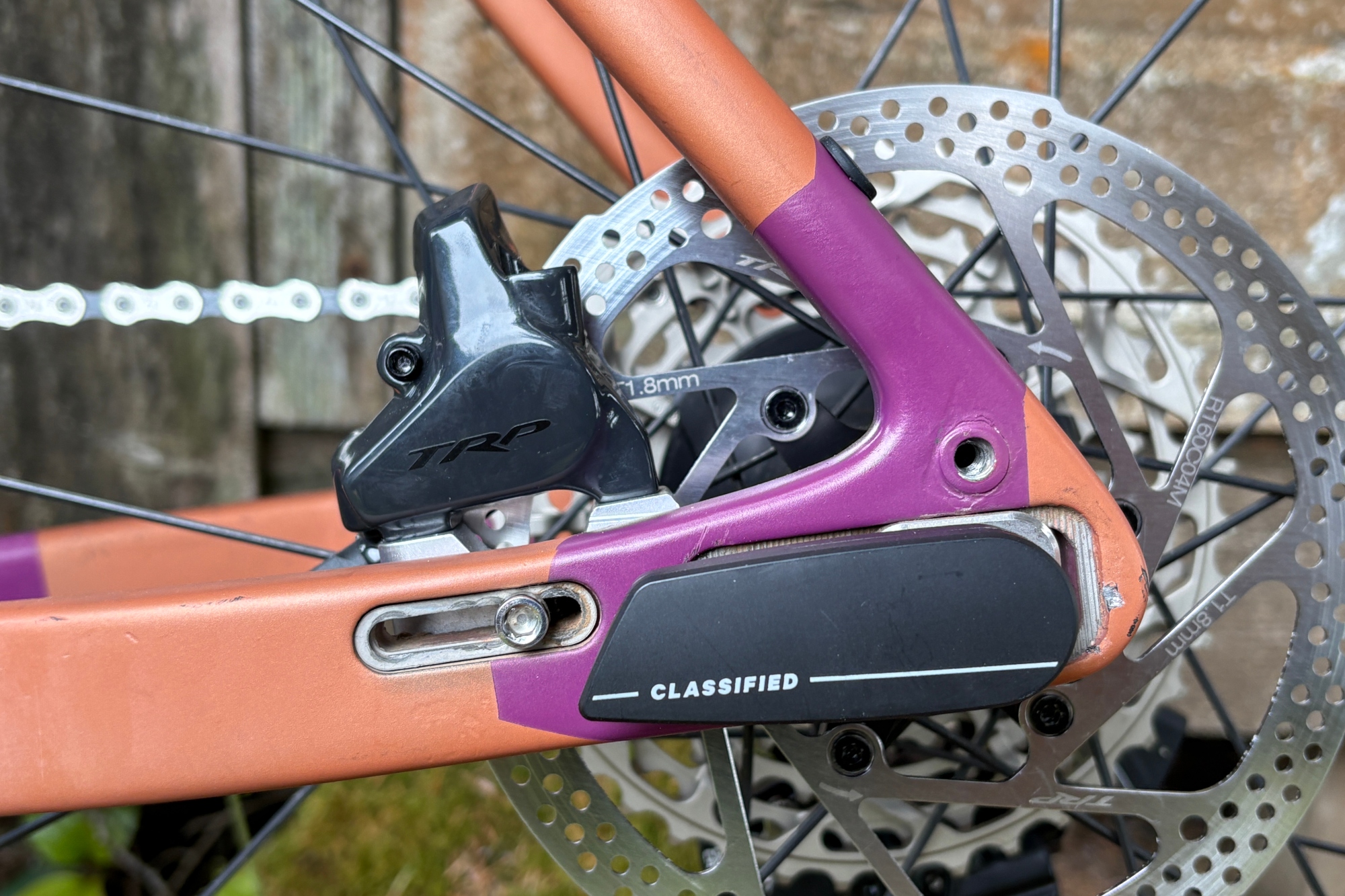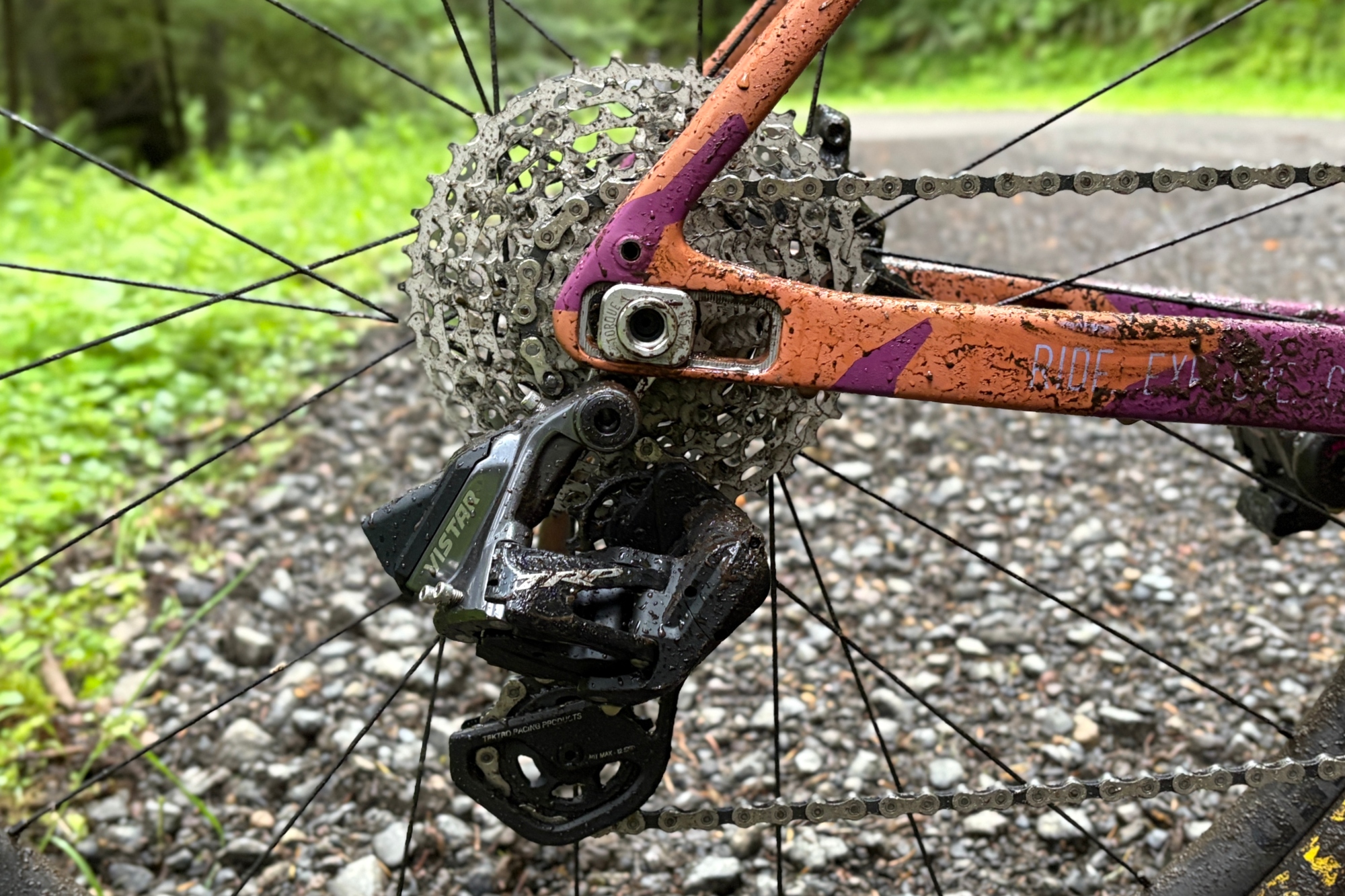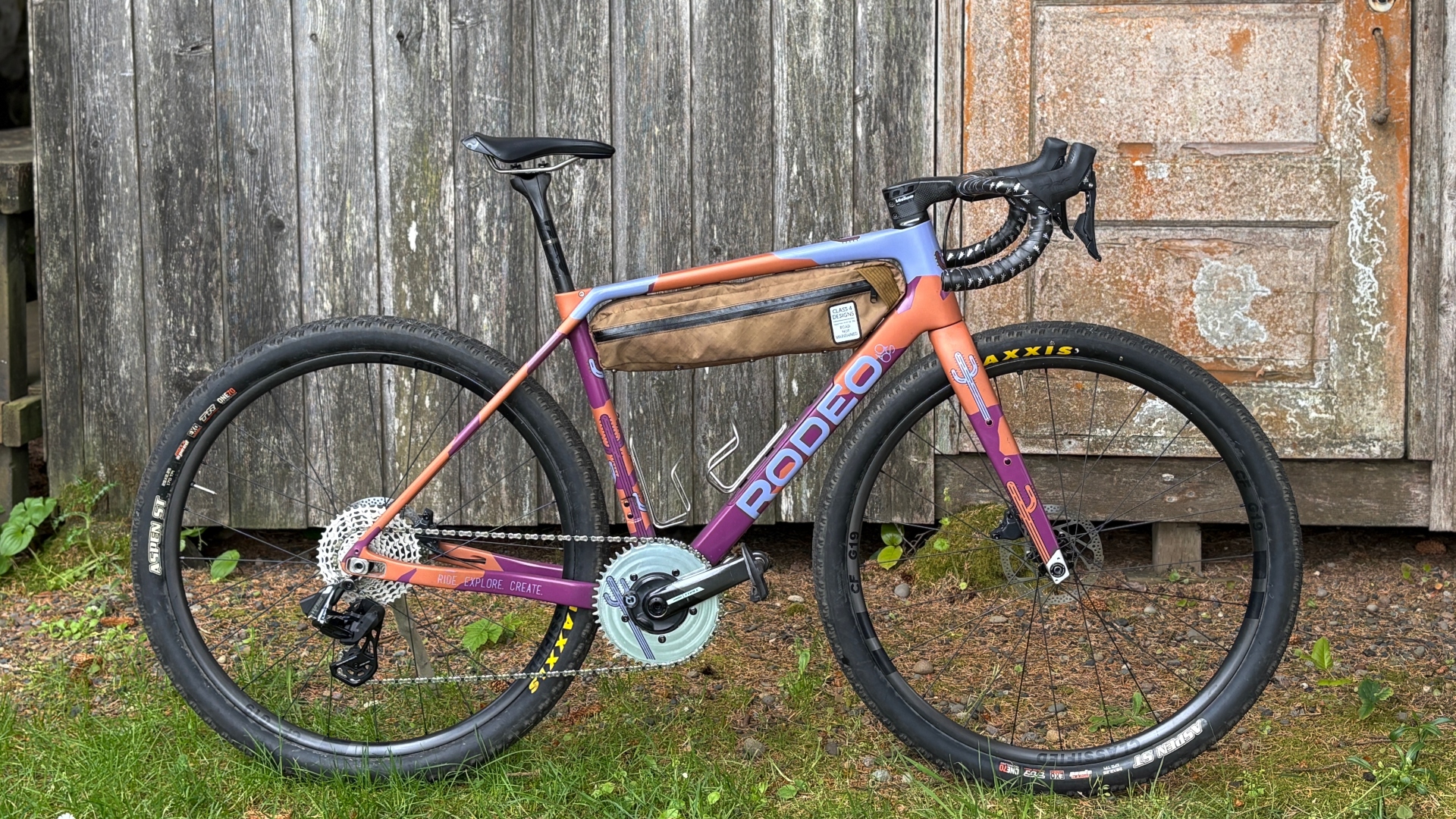Unbound-tested: TRP Vistar may just be the drivetrain rival gravel riders have been waiting for
From Oregon’s forests to Arizona’s harsh deserts and the prairie miles of Unbound Gravel, we’ve pushed the new TRP and Classified drivetrain to its limits. After a month in the saddle, here’s what stood out

The TRP Vistar groupset marks a big step forward for both TRP and Classified’s Powershift technology. By building a drivetrain specifically around the innovative Classified hub, TRP delivers a system that feels integrated and purpose-built. What’s more, the TRP drivetrain is good enough to stand on its own with a precise rear derailleur, best-in-class brakes, and fantastic ergonomics that make it a joy to ride.
-
+
Unique Classified Powershift technology that offers the upside of both 1x and 2x systems
-
+
Comfortable hoods that are conducive to long, rough gravel rides
-
+
Fantastic stopping power and modulation from the TRP brakes
-
+
Easy to use and precise electronic shifting
-
-
A slight feeling of resistance when the Classified Powershift Hub is in the smaller gear ratio
-
-
A small weight penalty
You can trust Cycling Weekly.

About the test:
I received the full TRP Vistar groupset a month ahead of its release and took it on a cross-country gravel tour, culminating in the 200-mile Unbound Gravel race. I mounted it on my race bike, a Rodeo Adventure Labs Trail Donkey 4.0, with the goal of testing its capabilities as a serious gravel racing setup.
The test period naturally broke into a clean three-part split: a week in the wet, late-spring mud and grit of Oregon’s Coastal Range; a stretch through the bone-dry gravel and trails of the Sonoran Desert in Arizona; and a final week of pre-riding the tallgrass prairie of Kansas ahead of Unbound Gravel.
While it was just a month, that three-part breakdown gave me significant insight into the groupset’s strengths and quirks, while subjecting it to plenty of stress. After some challenging 50 hours on the system, here’s what I’ve concluded.
A Long Time Coming

TRP’s Vistar drivetrain has been a long time coming. Media were given sneak peeks at the Sea Otter and Eurobike expos in 2024, and some prototypes were ridden at Unbound in 2024 as well. The Classified hub, meanwhile, has been around for several years now. Cycling Weekly reviewed it back in 2021 and again at Unbound Gravel in 2022. I guess I was late to the game as I ‘only’ tried the Classified hub for a first time in 2024 at a media camp.
The internal hub-based shifting was spec'd on an all-road bike with a Shimano drivechain. Ultimately, I felt the shifting was cool, elegant at times, but I left the few days of riding feeling like it wasn’t quite ready to be something most consumers would consider. This was due to little things like the rear hub coming a little loose, or the sprint shifter requiring some thought to make shifts at the right time, or having to keep track of which rear “ring” I was in. These deficiencies, from my perspective, seemed to stem from the fact that the Classified system was an add-on to something that: a) wasn’t theirs; and b) was replacing a Shimano front derailleur that is already very good.
The new TRP Vistar groupset addresses these issues so well that it's now a competitive option for gravel riders seeking a highly functional, capable drivetrain at a good price.
Giving the Classified Powershift a proper home

Compared to SRAM’s electronic systems, TRP’s felt, if anything, quicker. The Classified Powershift hub is even more responsive than the rear derailleur, shifting instantly across the cassette range,
To start, it’s imperative to discuss the central draw of the groupset before we get into specifics. Despite the groupset’s TRP branding, it is inextricably linked with the Classified Powershift system. With all due respect to TRP, which deserves a lot of credit for the quality we’ll dig into later, the Classified technology is what truly defines this drivetrain.
The latest race content, interviews, features, reviews and expert buying guides, direct to your inbox!
The Classified Powershift system is an innovative piece of technology that simulates a traditional 2x setup by altering the gear ratio inside the rear hub. The first iteration launched in 2020 as the brainchild of Belgian engineers with an automotive background.
Classified is designed to be somewhat brand-agnostic, with its shifting done via a remote button; however, those setups have always required Classified-specific cassettes. With the Vistar groupset, the cassette is co-developed by TRP and Classified, and is built specifically around the Powershift hub, which now comes standard.
The gear ratio at the wide end of the spectrum remains unchanged from previous Classified drivetrains: a 1:1 ratio when the internal gearing is locked out (the hypothetical “big ring”), and a 0.7 ratio when it’s engaged (the “little ring”). Depending on which front chainring you use—I tested 46t, 48t, and 50t setups—that range mimics the gear jumps of a Shimano 2x crankset.
The cassette I tested was an 11–40t, the widest range available. While Classified has offered this size before, the key update with Vistar is greater cassette variety. That includes three road-focused options optimised for the shorter cage TRP rear derailleur, and two gravel options paired with the longer cage variant. The gravel-specific derailleur is a TRP-exclusive design—easy to adjust, impressively precise, and reasonably quick.
Switching from Shimano's mechanical GRX to TRP’s electronic shifting took some getting used to, but that’s par for the course with any move to electronic. In fact, compared to SRAM’s electronic systems, TRP’s felt, if anything, quicker.
The Classified Powershift hub is even more responsive than the rear derailleur, shifting instantly across the cassette range, which helped smooth my adaptation to the new groupset. I found this especially useful in the desert riding I did, as the ability to shift under load was key when navigating the drops, washes, and steep pitches of blown-out desert two-track.
I used the gravel-specific derailleur to accommodate the bigger range, but I plan to swap it for the shorter cage road version to test its road performance. In theory, that setup should shift even faster. The swap should be simple, thanks to the wireless derailleur, which pairs easily to the shifters via the bar-end command unit. All hub shifting is controlled through the rear thru-axle, which also handles charging duties.
Both systems lasted about 16 hours before the bar-end command centre signalled it was time to recharge. That said, the rear derailleur did lose connection with the shifter on a few occasions. Swapping in fresh batteries usually resolved it; other times, simply lifting and dropping the rear wheel reconnected the system. It’s something I’ll be monitoring long-term. In total, there are three batteries: two in the bar end unit and one for the rear derailleur. The Classified hub is powered by it through the axle, which is charged by a protected Micro USB port.
Shifting the hub works just like shifting between chainrings. Programmed synchronised shifting behaves just as smoothly as with a 2x system. And now that controls use a standard electronic layout, gone are the days of accidentally jumping to the wrong “ring.” Most importantly, though, the simplicity and customisability of a 1x system anchors the whole experience.
TRP's impressive stopping power and elite feel

Braking performance stood out from the get-go, especially in the damp conditions of the Pacific Northwest.
TRP is a longtime component company that has cut its teeth on the mountain bike side with a full slate of brakes and a few earnest attempts at drivetrain development. For drop bars, TRP is very popular among single-speed enthusiasts with the Hylex drop bar brakes and levers. Some of my more experienced colleagues even remember the days TRP was popular in cyclocross before the introduction of hydraulic discs.
While the Hylex does have a conversion kit to make it Shimano Di2 capable, the Vistar groupset is the first full drop-bar groupset from the brand. Even though Vistar is only the first groupset from the brand, its legacy as a top-tier brake manufacturer is evident. I may have come to this groupset to explore the Classified integration, but I stayed for the TRP core

Control aside, the smaller hoods are also simply more comfortable, leaving me with less hand fatigue on the longer rides
As soon as I felt the hoods and the brakes, I knew I was at home on the groupset. Braking performance stood out from the get-go, especially in the damp conditions of the Pacific Northwest. I was riding along the Pacific Coast, mostly on old logging roads that snake through old-growth forests and brutally steep terrain. Here, the paved roads are often soaked and covered in a thin layer of muck. When the roads are gravel, they are muddy, with traction changing corner to corner depending on how the ground holds or sheds water. All of it demands precise speed control.
In those demanding conditions, TRP’s brakes delivered a level of modulation and stopping power on par with any two-piston brakes I’ve used. That braking power is paired with brake levers that are only a bit larger than an old rim brake variety. A smooth and long pull offers the ability to feather the brakes well, preventing overbraking that is easy to do when the surface is so slick. The smaller hood shape further increases this precision by allowing a better grip of the lever when braking on the hoods.
While I have never had problems with other electronic hoods being too big, the smaller hood shape was a nice addition, regardless, and I’d imagine riders with smaller hands will especially benefit from them. Control aside, the smaller hoods are also simply more comfortable, leaving me with less hand fatigue on the longer rides, which were numerous leading up to Unbound. While my Unbound race was not a success for me (a story for another time), the comfort of these hoods was a huge reason why I was committed to running the groupset at the race despite having had so little experience with the drivetrain.
Small quirks in a broader, positive picture

The bar end device, pictured above, connects to the shifters via a wire and serves as the Bluetooth conduit between the shifting and the Classified hub and the TRP derailleur. It is also how you can adjust the derailleur instead of the companion app. Over the duration of the month testing I only had to adjust the shifting during the setup phase.
Big picture, there’s very little to fault in the Vistar groupset; just a few points worth flagging.
The most obvious complaint is weight, which is nothing new to Classified systems. The system is undeniably heavier than other top-tier groupsets on the market. In my case, swapping from mechanical GRX to Vistar on my Rodeo Labs Trail Donkey 4.0 increased the build weight from 19.2 to 20.8 pounds.
While that’s a sizable jump, it’s not a perfect apples-to-apples comparison. So, to use TRP’s claimed weights, the difference between Vistar and Shimano GRX Di2—its most comparable rival— is about 268 grams, using a DT Swiss 350 hub as a stand in and excluding rim weight.
Efficiency is the other touch point where some might be hesitant. With internal gear changes instead of a traditional hub, it is impossible to eliminate all the inefficiency that comes from the added resistance from internal gearing. Classified claims, through a thoroughly researched white paper, that the inefficiency equals around 1% increased drag. Classified argues that the 1% of drag is easily made up for in the aerodynamics and chainline efficiency of a 1x chainring design.
Anecdotally, I never felt a noticeable drop in power transfer. That said, there is a subtle difference in feel with the slightest bit of resistance present when the internal gear is engaged.
I should note that I opted not to use a TRP crankset. I did this because 1.) at the moment, TRP does not make a specific T47 bottom bracket; 2.) I wanted to retain the same power meter I had been using for training consistency, and 3. The teeth profile of the TRP chainring was much shallower than the Garbaruk chainrings I have been using over the last year.
Chain drop has been a challenge for me in the past, especially at Unbound, and with a larger teeth profile on a 1x that risk is greatly mitigated. I have yet to drop a chain with a Garbaruk chainring, and I have used a selection of them for over a year. The Garbaruk/TRP mashup’s only downside was a bit of drag in the larger cogs on the cassette, but that is a fair tradeoff for the security that comes from the larger teeth. The largest cogs were still effective even in adverse, gritty conditions.
Weights and Prices

Part | Price (USD) | Weight |
Shifters, brakes and cables | $499.98 | 926 grams |
Crankset (tested: 170mm cranks with a 48t chainring) | $349.99 | 633 grams |
Classified Powershift Hub | $899.99 | 493 grams |
Rear derailleur (RD-G8000E) | $370.99 | 378 grams |
Bar End Unit and electronic connections to shifters | $65.99 | 46 grams |
Cassette (11-40t) | $209.99 | 290 grams |
Disc Brake Rotors (TR14) | $64.99 | 268 grams |
Chain (KMC X12) | $44.95 | 285 grams |
Totals | $2,506.87 | 3,319 grams |
Where does it fit in comparison to the mainstays of the groupset market

Overall, the cost of the Vistar groupset is around $2506.87, which includes the rear hub but no rims. For reference, a Shimano GRX Di2 groupset retails for $2,541, and SRAM Red XPLR AXS is $3,530. With the Classified system, it is hard to make a direct comparison, with most groupsets not including the cost of one hub. But with Vistar, the Classified hub is required.
Still, beyond the $899 hub, the Vistar group is competitive in its pricing with shifter/brakes running $249.99 each, a gravel cassette at $209.99, and the rear mech at $370.99. While that hub cost is a big chunk of change, as Classified has grown, so too have the number of rim options at different price points. I tested the groupset with a pair of Classified G19 rims, which are solid but not spectacular.
Classified is still a luxury good in cycling, and that doesn’t fundamentally change with the Vistar groupset. What is nice to see, however, is that TRP has furnished the Classified hub inside an impressive groupset with a great deal of customisation options – all without pushing the price threshold of other high-end groupsets.
Ultimately, I came away from this test with a great deal of affection for the groupset. I am excited to try a road configuration next, because I believe it might be an even better use case for the group. But as a gravel groupset, it has real upside that brings distinct benefits to the market in a unique way. If you are looking to shake things up, or perhaps have a bike that is not UDH compatible, I’d recommend taking a serious look at TRP Vistar.

Logan Jones-Wilkins is a writer and reporter based out of the southwest of the United States. As a writer, he has covered cycling extensively for the past year and has extensive experience as a racer in gravel and road. He has a Bachelor of Arts from the University of Richmond and enjoys all kinds of sports, ranging from the extreme to the endemic. Nevertheless, cycling was his first love and remains the main topic bouncing around his mind at any moment.
You must confirm your public display name before commenting
Please logout and then login again, you will then be prompted to enter your display name.